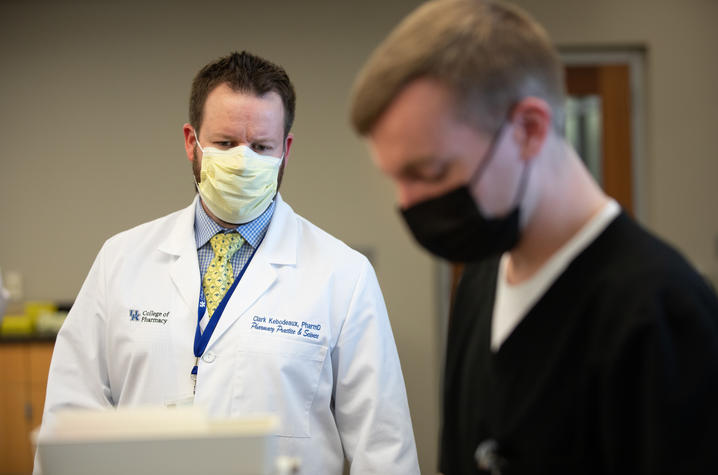Helpful Information Regarding At-Home COVID-19 Test Kits

The University of Kentucky Public Relations & Strategic Communications Office provides a weekly health column available for use and reprint by news media. This week's column is by Clark Kebodeaux, Pharm.D., clinical associate professor of pharmacy practice and science at the University of Kentucky College of Pharmacy.
As the world continues to navigate life with COVID-19, many U.S. residents are looking for ways to protect themselves and their loved ones. Home COVID tests are tests you can take from the comfort of your home or anywhere outside an official testing site. Many return rapid results, providing a test result in 15 to 30 minutes. Last month the Biden administration launched their website for Americans to request at-home rapid COVID-19 tests. Many Kentuckians who signed up have received their kits or are expecting them in the coming days.
Q: How can the cold weather impact at-home COVID-19 test kits that millions of Americans are receiving in the mail?
A: At-home, or ‘rapid,’ COVID-19 test kits are most effective when stored at room temperature but are able to withstand colder conditions temporarily. Before using one of these tests, make sure that the test has had time to return to room temperature.
Q: What should people do to prevent any impacts to their test kits?
A: The best approach is to try to bring any mailed test kits inside as soon as you can. Tests should still be effective as they will be packaged to ship but may be less effective if left in the cold—especially frozen temperatures—for long periods of time. Each test has specific recommendations that have been approved via an Emergency Use Authorization (EUA) at the FDA, so you may want to contact the manufacturer of your test kit if you believe it has been impacted by the cold for a long period of time.
Q: For people testing at home, what are some things they need to be aware of?
A: Each test kit comes with instructions--make sure to follow the instructions provided with the at-home test kit! Read through the instruction manual once or twice before completing the test. If you don’t swab correctly and/or follow the instructions, you may be more likely to get a false negative result (meaning the test may be negative even if you have COVID-19). Most ‘rapid’ tests are testing for the COVID-19 antigen, which is likely to be highest when you are most contagious.
Q: Are at-home COVID-19 tests an effective tool in combating the ongoing COVID-19 pandemic?
A: Rapid COVID-19 tests are a fast and convenient way to reduce the risk of spreading COVID-19 to others. Additionally, it may be useful to test multiple times to ensure you don’t have a false negative; repeat tests should be spaced out by at least 24 hours. Make sure to follow up with your provider or pharmacist if you have additional questions!
As the state’s flagship, land-grant institution, the University of Kentucky exists to advance the Commonwealth. We do that by preparing the next generation of leaders — placing students at the heart of everything we do — and transforming the lives of Kentuckians through education, research and creative work, service and health care. We pride ourselves on being a catalyst for breakthroughs and a force for healing, a place where ingenuity unfolds. It's all made possible by our people — visionaries, disruptors and pioneers — who make up 200 academic programs, a $476.5 million research and development enterprise and a world-class medical center, all on one campus.




